Self-Employed Retirement Savings Options
One of the most difficult aspects of being self-employed is not being able to rely on employer provided benefits.
This means that with no 401(k) or 403(b) plan at your fingertips, you are on your own to decide the best way to save for retirement.
These are the most common and most effective ways to save for retirement when you have self-employment income – whether that be from working as a contractor (if you receive a 1099 at the end of the year, this is you!) or owning your own business.
It’s important to note that the commentary below is meant for self-employed individuals with no employees. Having employees can add a significant amount of complexity in deciding which retirement savings options are best for you and your business. Also, note that the limits referenced below are for 2023.
IRA or Roth IRA
These accounts are very easy to set up and are readily available through all of the major brokerage firms.
But they do have very low contribution limits and if you’re a high income household, you most likely cannot contribute to a Roth IRA or deduct contributions to a traditional IRA.
Contribution Limit
$6,500 per year if under age 50, $7,500 if over 50.
Tax Implications
Traditional IRA contributions could be tax deductible if you and your spouse have no other employer-sponsored retirement plans. If you do have employer plans, contributions could still be deductible depending on your income level. Roth IRA contributions are always made on an after tax basis.
Flexibility of Withdrawals
10% penalty for withdrawals taken before age 59 1/2.
Setup and administration
Very easy to open a new account, and no ongoing administration.
SEP IRA
A SEP IRA is also easy to set up and can allow you to put away more money than a typical IRA or Roth IRA.
You also don’t have to worry about income limitations to deduct contributions to this type of account. However, there is no Roth option available.
Contribution Limit
25% of compensation or net self-employment earnings, up to a maximum contribution of $66,000.
Tax Implications
Contributions are tax deductible, but also potentially reduce the qualified business income (QBI) deduction. No Roth contributions available.
Flexibility of Withdrawals
10% penalty for withdrawals taken before age 59 1/2.
Setup and administration
Easy to setup, plan can be established and contributions made up to your tax return due date – typically April 15 of the following year. No ongoing administration.
Solo 401(k)
These accounts allow for larger contributions than a traditional IRA or SEP IRA.
There is a little more involved in the setup and ongoing administration of solo 401(k)’s, but this may be worth the additional flexibility in the amount you can contribute and the type of contributions you can make – some of these plans allow for Roth contributions.
Contribution Limit
The lesser of 100% of compensation or $22,500 if under 50, $30,000 if over 50. You can also contribute an additional 25% of net self-employment income as an employer contribution. Total employee and employer contributions cannot exceed $66,000.
Tax Implications
Employer and traditional employee contributions are tax deductible, but also potentially reduce the qualified business income (QBI) deduction. Some plans allow employee Roth contributions.
Flexibility of Withdrawals
10% penalty for withdrawals taken before age 59 1/2.
Setup and administration
Fairly easy to setup. There is an annual tax filing requirement once the plan reaches $250,000 of assets (Form 5500-EZ).
Taxable Brokerage Account
These accounts provide the ultimate flexibility – there are no contribution limits, and there are no restrictions on when or how the funds can be used.
The catch is that there are also no tax breaks when making contributions.
Contribution Limit
None
Tax Implications
There are no upfront tax advantages, contributions are made on an after tax basis. Gains are taxed at ordinary income tax rates (if the underlying investment was held for 1 year or less) or at long-term capital gains rates (if held for greater than 1 year) and are taxed in the year the investment is sold. Dividends and other distributions are not tax deferred as in an IRA or 401(k).
Flexibility of Withdrawals
No limitations on withdrawals.
Setup and administration
Very easy to set up, and no ongoing administration.
Defined Benefit Plans
Defined benefit plans can allow self-employed individuals to save a significant amount of money on a tax deferred basis.
But, this comes with significant complexity and cost in the setup and administration of these plans.
Contribution Limit
Determined by an actuarial calculation each year.
Tax Implications
Contributions are tax deductible.
Flexibility of Withdrawals
Distributions are determined by the benefit formula that you elect. Maximum annual benefit is $265,000.
Setup and administration
There can be significant complexity and cost in setup and ongoing administration.
Closing Thoughts
Your unique situation could mean that you’d benefit from another savings option not listed here, but these options are where most self-employed individuals should start when thinking about long-term savings.
If you need some guidance deciding which option is best for you and your family, we’d be happy to help!
Joe Calvetti is a CPA and the founder of Still River Financial Planning, a comprehensive, fee-only financial planning firm that specializes in working with young families and professionals. Click here to learn more about how we work with clients.
Are you interested in staying up to date on new articles and other news from us? Sign up for our newsletter or follow us on Facebook and Instagram.
Ready to learn more about how we can work together? Schedule an introductory call.
Disclaimer: The information provided above is for educational purposes only and should not be considered financial, legal, or tax advice. You should consult with a professional for advice specific to your situation.





